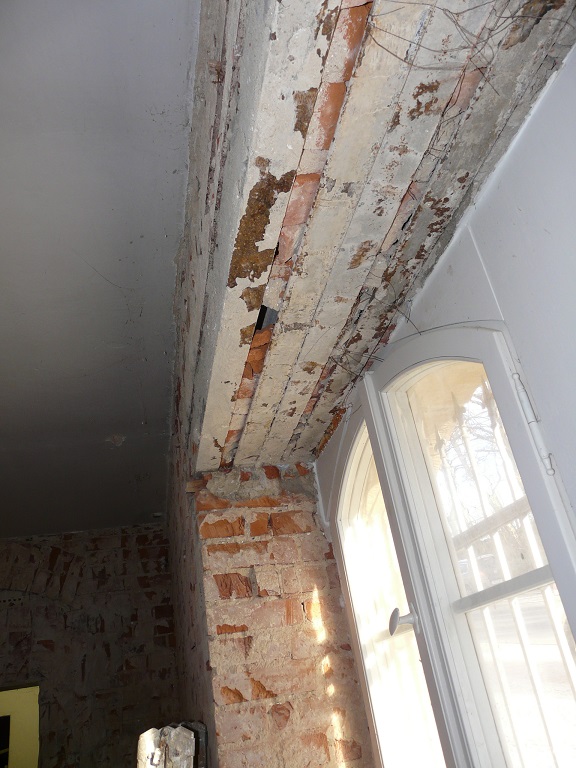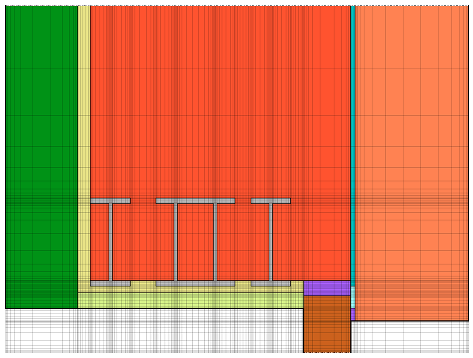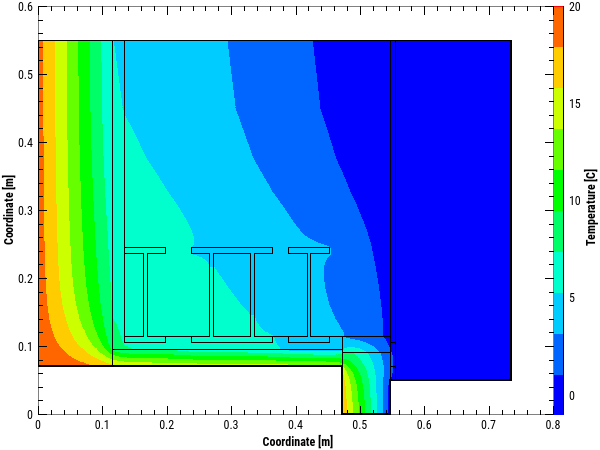Thermal bridges (in the building context) are constructions or construction details whose heat transport behavior differs strongly from that of neighboring one-dimensional components/constructions. A general distinction is made between geometric and material thermal bridges. From a modeling point of view, both are 2D or 3D models, possibly with different materials.
The additional heat gains or losses caused by thermal bridges become important especially for more insulated buildings. In addition, the local lowering of the surface temperature is critical with regard to condensation and mold growth.
In thermal bridge analyses, renovation variants of problematic cross-sections are often examined, An example of this is the window lintel shown in the photo.

A simulation model is now created for a selected refurbishment variant (here 2D, see screenshot). The simulation model already shows the interior insulation in front of the wall and below the steel girders.

Constant boundary conditions are usually assumed for the calculation, for example outdoor temperatures of -10 °C and indoor temperatures of 20 °C. However, dynamic boundary conditions (real climate) can also be used. This then results in temperature distributions in the construction, which are usually shown in false color diagrams.

For the actual evaluation, the temperatures at certain points of the construction, for example in the area of the reveal, are of interest. This allows the risk of surface condensation and thus mold growth to be evaluated.
For the correct calculation of such temperature distributions, a suitable calculation grid (see geometry model above) is primarily important. As a rule, the smaller the grid elements, the more accurate the result. However, since a finer grid increases the computation time, a good compromise between grid accuracy and computational effort must be found (usually in the context of a grid sensitivity study). Simulation programs which do not give the user the possibility of grid adjustment/refinement are to be judged critically (no possibility of error checking by the user).
Validation and Test Series
- DIN EN ISO 10211 (2008) – standard on thermal bridges in building construction, contains a normative annex A for the validation of calculation methods with 4 test cases
Literature
Below are some more books/texts we know about the topic and briefly discussed. We would appreciate your suggestions/contributions to expand this list. Please contact us via the contact form.
Books on the subject
- Heinz Tautz, Wärmeleitung und Temperaturausgleich, Akademie Verlag Berlin 1971.
This book contains a series of approximate solutions using Laplace transforms. These can be used for a variety of geometric shapes as reference data for comparison with numerical results of a thermal bridge calculation program.
